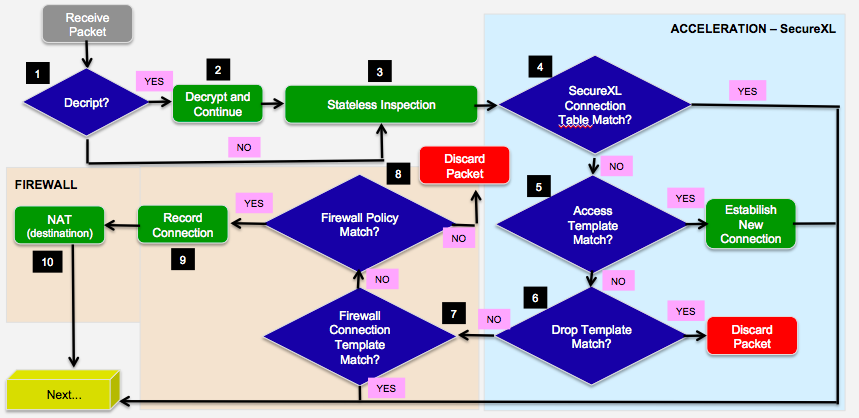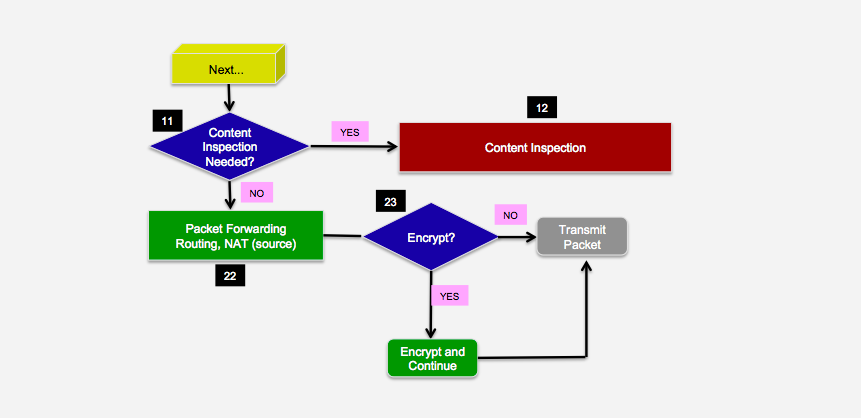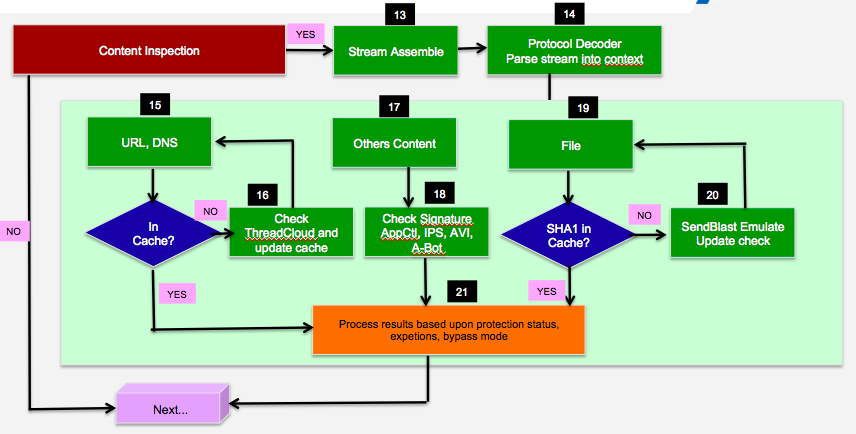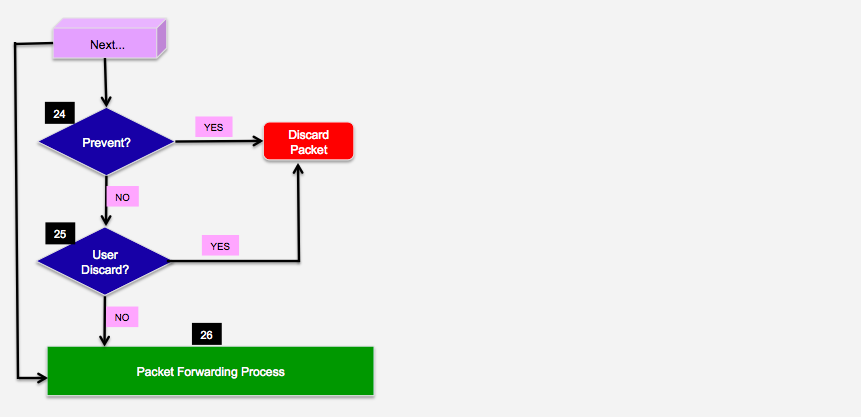Hi Carlos,
I don't think you can draw a reasonable flowchart in the area of content inspection. That's why I left it out of my Flowcharts. The problem is that a strong difference has to be made between Passive Streaming Library (PSL for F2F Path ,PXL for medium path) and Active Streaming (CPAS) . You describe PSL and PXL here? Real one must stand with SecureXL strongly differentiate whether it goes the F2F path, PXL path or the Acceleration path (without content inspection).
In the firewall chain you can see the PSL (PXL) and CPAS modules:
# fw ctl chain
...
in chain:
...
14: 7f730000 (ee3485a0) (00000001) passive streaming (in) (pass_str)
15: 7f750000 (ee55b7d0) (00000001) TCP streaming (in) (cpas)
...
out chain:
...
3: - 1fffff0 (ee55ba00) (00000001) TCP streaming (out) (cpas)
13: 7f700000 (ee55bbf0) (00000001) TCP streaming post VM (cpas)
...
There is another problem at the waypoint "Protocol Decoder". This is where Context Management Infrastructure (CMI) comes in. The "Protocol Decoder" does not assemble files, URL's and DNS requests. It only recognizes the protocols. The RAD daemon (DNS and URL) or the DLPU daemon (files) assemble the informations for evaluation of further blades RAD for (AntiBot, AntiVirus, URLF,...) and DLPU for (TED). There are other daemons in play here, too.
I once tried to summarize that in an overview. But I don't think you can reproduce this 100% in a drawing either. Here is the link to the article: R80.x Security Gateway Architecture (Content Inspection)
Personally, I would not try to map the content inspection path as a flowchart.
You have a lot of work in the flowchart, so once again a lot of respect from my side.
Regards,
Heiko
➜ CCSM Elite, CCME, CCTE ➜ www.checkpoint.tips






